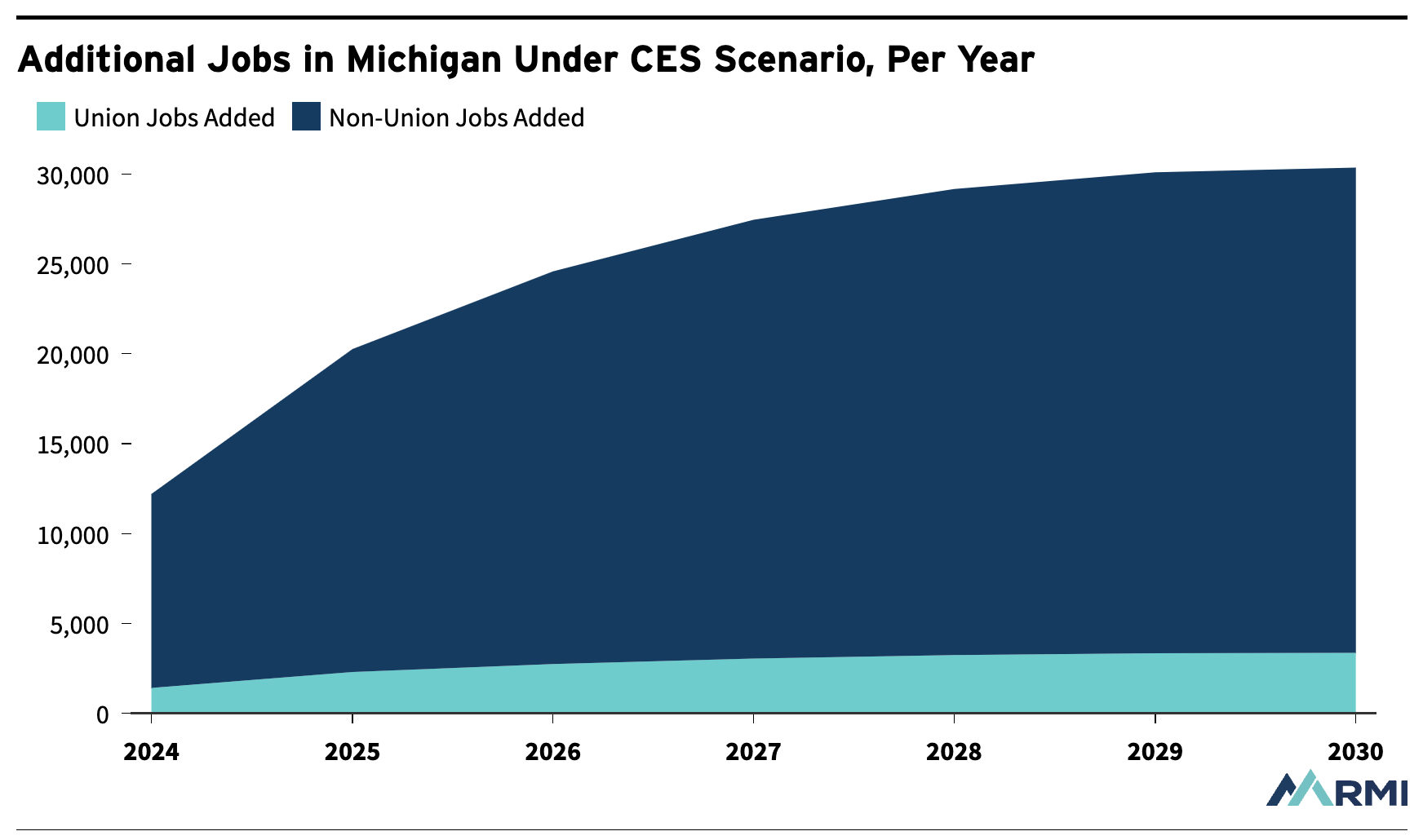
The world is already moving to a clean energy economy, more rapidly than anyone predicted. The economics work, the health benefits are clear, and more people across the political spectrum support a clean energy standard than oppose it. The Michigan legislature appears to be pursuing a clean energy standard (CES), which would require that 60 percent of utility electricity sales come from renewable or nuclear energy by 2030, and 100 percent by 2035. This is more ambitious than what was first proposed in the Michigan Healthy Climate Plan, and Gov. Gretchen Whitmer just announced her intention to support that effort.
According to our analysis, this one policy would single-handedly put Michigan over three-quarters of the way to its 2030 climate goals.
Our recently-released state scorecards (see methodology note below) show Michigan’s current markets and policies only get the state halfway to its 2030 climate targets. With the proposed CES implemented, the state would be 78 percent of the way to its goals. That’s the single biggest leap any policy we’ve analyzed could make for Michigan.
This policy would also put the state halfway toward its 2050 goals of carbon neutrality. In comparison, today’s trajectory only gets the state one-third of the way to that goal by 2050.
And benefits extend beyond climate pollution reductions. By 2030, according to our Energy Policy Simulator for Michigan, this effort is projected to prevent 1,800 lost work days annually (due to health problems from pollution), add $4 billion to the state’s GDP, and add over 30,000 good-paying jobs per year.
The proposed clean energy standard positions Michigan to be a leader in building the clean energy economy. It also would mean that Michigan is doing its part to stop the extreme weather events that are harming and killing people and livelihoods across the state, country, and world.
Of course, to meet 2030 targets, the state would still have more to do. Our analysis shows that the buildings sector has the potential to be the next biggest opportunity to meet those goals. Work also remains to be done in industry and transportation. Fortunately, tools and resources like tax credits, dedicated financing, and new grant programs from the Inflation Reduction Act and the Bipartisan Infrastructure Law will make it easier to improve all of these sectors.
For today, the big question is whether the state will pass the proposed clean energy standard. Our previous analysis shows that a few key actions taken by states can have big impacts. In Michigan, this one policy gets the state the furthest. For those concerned about climate action, this opportunity provides pragmatic hope.
This analysis was all done with the free, open-source Energy Policy Simulator for Michigan, developed by RMI and Energy Innovation. We invite anyone to try it themselves to compare options and find solutions for meeting economic, health, energy, and pollution goals. You can also find full economy analyses for Michigan that have already been completed in these two reports.
Note on methodology: The scorecards are based on a slightly different target for 2030: 53 percent reduction of GHG emissions from 2005 levels, versus the 52 percent reduction from 2005 that the state has pledged. The analysis in this article is based on the 52 percent state-aligned target, but the assertion that the state is currently projected to only get halfway to that target remains.
© 2023 Rocky Mountain Institute. By Jacob Corvidae. Published with permission. Originally posted on RMI.
I don’t like paywalls. You don’t like paywalls. Who likes paywalls? Here at CleanTechnica, we implemented a limited paywall for a while, but it always felt wrong — and it was always tough to decide what we should put behind there. In theory, your most exclusive and best content goes behind a paywall. But then fewer people read it! We just don’t like paywalls, and so we’ve decided to ditch ours. Unfortunately, the media business is still a tough, cut-throat business with tiny margins. It’s a never-ending Olympic challenge to stay above water or even perhaps — gasp — grow. So …






